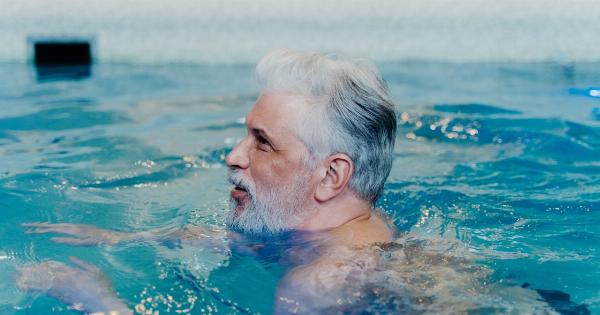Water can be an excellent tool for exercise and rehabilitation, particularly for individuals who are recovering from an injury, have arthritis, or are elderly.
Swimming and other forms of aquatic exercises are low-impact, which means that they put less stress on joints and muscles than traditional exercises such as running or weightlifting. Furthermore, the buoyancy of the water helps to support the body weight, which can make movements and exercises easier and less painful.
Buoyancy and Resistance Training
Water provides natural resistance, which makes movements in water more challenging and helps to build strength. Water resistance training can be done by using equipment such as water weights, weighted belts, or resistance bands.
This type of training is particularly beneficial for those rehabilitating an injury, as it provides a low-impact way to rebuild strength.
Hydrotherapy
Hydrotherapy involves using water for therapeutic purposes. It can be used to relieve pain, promote relaxation, and to speed up recovery from an injury.
Hydrotherapy sessions often involve exercises such as stretching and range of motion movements performed in a pool with warm water.
Aquatic Therapy for Arthritis
Aquatic therapy is often recommended for individuals with arthritis, as it can help to reduce joint pain and inflammation. The warm water of a pool can help to loosen stiff joints and increase range of motion.
Exercises such as walking or swimming can help to maintain joint flexibility and build strength in the muscles surrounding the joints.
Swimming
Swimming is an excellent form of exercise that works the entire body. It is a low-impact exercise that is suitable for individuals of all ages and fitness levels.
Swimming is particularly beneficial for individuals with back pain, as it strengthens the muscles in the back while also relieving pressure on the spinal column.
Benefits of Aquatic Exercise
Aquatic exercise provides numerous benefits, including:.
- Improved cardiovascular fitness
- Increased muscle strength and endurance
- Reduced joint pain and swelling
- Increased flexibility and range of motion
- Reduced stress on the body
Precautions for Aquatic Exercise
While aquatic exercise is generally safe for most individuals, it is important to take certain precautions to prevent injury. Always consult with a healthcare provider to determine if aquatic exercise is appropriate for you.
Individuals with certain medical conditions, such as heart disease or lung problems, may need to avoid certain types of aquatic exercise. It is also important to take precautions to prevent drowning, such as having a lifeguard present during swimming sessions.
Aquatic Exercises to Try
Here are a few simple aquatic exercises to try:.
- Aquatic walking: Walk back and forth across the shallow end of the pool, lifting your knees high to engage your abdominal muscles.
- Water jogging: Jog in place in the shallow end of the pool, pumping your arms as you would during regular jogging.
- Single-leg balance: Stand on one leg in waist-deep water, holding onto the side of the pool if necessary, and balance for as long as possible before switching to the other leg.
- Aquatic squats: Stand with your feet shoulder-width apart in chest-deep water, then squat down as low as possible, keeping your back straight and your weight in your heels.
Conclusion
Water can be a great tool for exercise and rehabilitation, particularly for those with injuries or arthritis. Swimming and other types of aquatic exercise provide a low-impact way to build strength, increase flexibility, and reduce joint pain.
If you are considering aquatic exercise, talk to your healthcare provider to determine what types of activities are safe and appropriate for you.





























